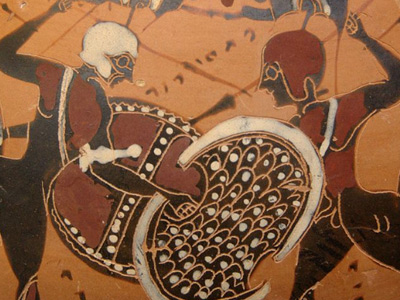
The siege of Miletus (494 BC) followed the Ionian naval defeat in the battle of Lade, and saw the Persians recapture the city that had triggered the Ionian Revolt in 499. The battle of Lade (494 BC) was the decisive battle of the Ionian Revolt, and was a crushing Persian naval victory that eliminated Ionian naval power and left the individual Ionian cities exposed to attack.

#The first peloponnesian war timeline series#
The battle of Pedasus or Pedasa (497 or 496 BC) was the third in a series of battles between the Persians and Carian rebels during the Ionian Revolt, and was a major Persian defeat that effectively ended their first large scale counterattack against the rebels. The battle of Labraunda (497 BC) was the second of three battles between the Persians and Carian rebels during the Ionian Revolt, and was a second costly defeat for the Carians.

The battle of the Maeander (497 BC) was the first of three battles between Carian rebels and the Persians that eventually disrupted the first major Persian counterattack during the Ionian Revolt. The siege of Soli (c.497 BC) was part of the Persian reconquest of Cyprus after the island's failed participation in the Ionian Revolt, and was the last to be concluded, lasting for four months. The siege of Paphos (c.497) was part of the Persian reconquest of Cyprus after the defeat of the Cyprian rebels at Salamis. The battle of Salamis, c.497 BC, was a land and sea battle on Cyprus, won by the Persians on land and the Cypriotes and their Ionian allies at sea. The siege of Amathus (c.498/7) saw an attempt by Greek rebels to capture the pro-Persian Phoenician city of Amathus on Cyprus. The battle of Ephesus (498 BC) was a victory won by the Persians over a rebellious Greek army that was retreating from an attack on the city of Sardis (Ionian Revolt). The battle of Sardis (498 BC) was a minor success for the Greeks during the Ionian Revolt, and despite being followed by a retreat and a defeat at Ephesus, helped to spread the revolt to Byzantium, the Hellespont and Caria. The failure of the attack played a part in the outbreak of the Ionian Revolt (499-494 BC), an attempt to overthrow Persian control of the Greek cities of Ionian. The siege of Naxos (499 BC) was an unsuccessful Persian backed attempt to restore a part of exiled Naxian aristocrats. The Ionian Revolt (499-493 BC) was a major uprising of the Greek cities of Asia Minor against Persian rule, and is said to have either delayed an inevitable Persian invasion of mainland Greece, or made that invasion more likely. The battle of Lake Regillus (499 or 496 BC) was a narrow Roman victory over the Latin League early in the life of the Republic that helped to prevent the last of the kings of Rome from regaining his throne. The Greco-Persian Wars of c.500-448 BC involved a series of clashes between the Persian Empire and the Greeks of Asia Minor and mainland Greece, and ended as something of a draw, with the Persians unable to conquer mainland Greece and the Greeks unable to maintain the independence of the cities of Asia Minor. The siege of Memphis (early 525 BC) was the last recorded resistance to Cambyses II of Persia's invasion of Egypt, and came after the main Egyptian army had been defeated at Pelusium.ĭorieus' Expedition to Sicily (c.510 BC) was an unsuccessful attempt by a band of Greek adventurers to capture the town of Eryx in western Sicily and use it as the basis of a new Greek city.

The battle of Pelusium (early 525 BC) was the decisive battle of the first Persian invasion of Egypt, and saw Cambyses II defeat Psamtik III, opening the rest of Egypt to conquest. The Persian Conquest of Egypt of 525 BC saw Cambyses II of Persia conquer the fourth major power of the ancient near east, completing the series of conquests begun by his father Cyrus II the Great. Pentathlus' Expedition to Sicily of c.580 was probably one of the first clashes between the Greeks and the Phoenician inhabitants of western Sicily, and ended with a victory for the Phoenicians and their local allies.


 0 kommentar(er)
0 kommentar(er)
